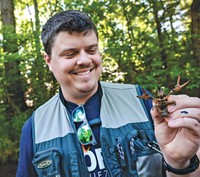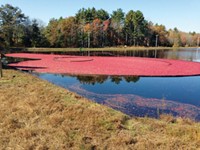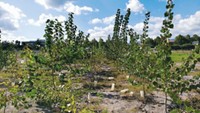Advertisement
Grab your lab coat. Let's get started
Welcome!
Welcome!
Create an account below to get 6 C&EN articles per month, receive newsletters and more - all free.
It seems this is your first time logging in online. Please enter the following information to continue.
As an ACS member you automatically get access to this site. All we need is few more details to create your reading experience.
Not you? Sign in with a different account.
Not you? Sign in with a different account.
ERROR 1
ERROR 1
ERROR 2
ERROR 2
ERROR 2
ERROR 2
ERROR 2
Password and Confirm password must match.
If you have an ACS member number, please enter it here so we can link this account to your membership. (optional)
ERROR 2
ACS values your privacy. By submitting your information, you are gaining access to C&EN and subscribing to our weekly newsletter. We use the information you provide to make your reading experience better, and we will never sell your data to third party members.
Environment
Restoring Threatened Mussels To Freshwater Could Cut E. Coli Contamination
Water Quality: In a lab experiment, one bivalve species removed nearly all fecal indicator bacteria from urban lake water
by Puneet Kollipara
January 29, 2015

Reintroducing a threatened freshwater mussel species to streams and estuaries could help remove harmful bacteria from the water, according to a new laboratory study (Environ Sci. Technol. 2015, DOI: 10.1021/es5033212).
The findings suggest that increasing mussel numbers could improve not only ecosystems, but also human health, says David C. Love, an environmental health scientist at Johns Hopkins University. The data are “yet another reason to want more shellfish restoration in our local streams, rivers, and estuaries,” says Love, who wasn’t involved in the study.
Unfortunately, numbers of many bivalve species are dwindling across the U.S. because of habitat destruction, threats from invasive species, and pollution. One species in trouble is Anodonta californiensis, a native of the western U.S. These mussels are among the species that government officials are returning to Mountain Lake in San Francisco as part of a lake restoration project at the former Presidio military base.
Niveen S. Ismail of Stanford University thought this project presented an opportunity to test another use of the shellfish. Mussels, oysters, and other bivalves can filter particulates and other contaminants from hundreds of milliliters of water per hour. Ismail and her colleagues, including Alexandria B. Boehm and Richard G. Luthy of Stanford, previously had shown that mussels could take up Escherichia coli, bacteria that are indicators of fecal contamination, from water. So Ismail and colleagues worked with the restoration team to study whether this filtration ability held true in actual lake water.
In a building next to Mountain Lake, researchers kept two 19-L aquaria filled with either just sand or with sand and A. californiensis mussels. The team pumped lake water through the aquaria. On three separate days spread across four weeks, they measured E. coli concentrations before and after the lake water passed through the tanks using a standard Environmental Protection Agency membrane-filtration method.
E. coli concentrations didn’t change in water after being pumped through the aquarium without mussels. But after going through the aquarium with mussels, E. coli concentrations fell by roughly 90%. The results were the same on all three days, suggesting the mussels didn’t lose their filtering abilities over time.
To determine what happened to the microbes, the researchers put either live mussels or empty mussel shells into beakers of water spiked with E. coli. They then tried to recover as much bacteria as possible from the mussels, the mussels’ feces, and the water after 24 hours. Researchers recovered 95% of the bacteria in the beakers with empty shells, but only 5% in the beakers with live mussels. This suggests that the mussels were digesting or otherwise inactivating the bacteria, Luthy says.
Although the mussels effectively decontaminated the water, they are far from a miracle solution, Love says; for example, in cold water, mussels may not open up to filter water. Still, the study’s message is clear, he says: “Intact, healthy ecosystems can promote human health,” and restoring a threatened species is one way to do that.





Join the conversation
Contact the reporter
Submit a Letter to the Editor for publication
Engage with us on Twitter